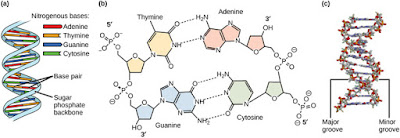Last week I wrote about the function of the DNA in our cells. Today I will write about a genetic condition that is known around the world. This condition is Trisomy 21 usually known Down syndrome. This is because there is a genetic disorder caused by an abnormal amount of autosomal chromosomes: 2N + 1. The syndrome has three autosomal chromosomes 21 instead of two, 2N +1= 46 +1= 47. Down syndrome include low muscle tone, small mouth, people who suffer this syndrome, keep it open, because they do not have enough space for the tongue, peculiar eyelids, heart defects, mental retardation, and poor resistance to infection. In addition, 1 of 700 children born with the syndrome.
Although we know how Down syndrome occurs. Down syndrome occurs at conception, across all social groups and to parents of all ages. The trend of Down Syndrome increases with maternal age. After 35 years there is a dramatic increase in the possibility of having children with this syndrome. It is nobody's fault. There is no cure and it does not go away. Finally, this video https://www.youtube.com/watch?v=m2r4Y3rvnwo show to you a young man who has Down syndrome but this is not an impediment for him to succeed in life.
Although we know how Down syndrome occurs. Down syndrome occurs at conception, across all social groups and to parents of all ages. The trend of Down Syndrome increases with maternal age. After 35 years there is a dramatic increase in the possibility of having children with this syndrome. It is nobody's fault. There is no cure and it does not go away. Finally, this video https://www.youtube.com/watch?v=m2r4Y3rvnwo show to you a young man who has Down syndrome but this is not an impediment for him to succeed in life.








